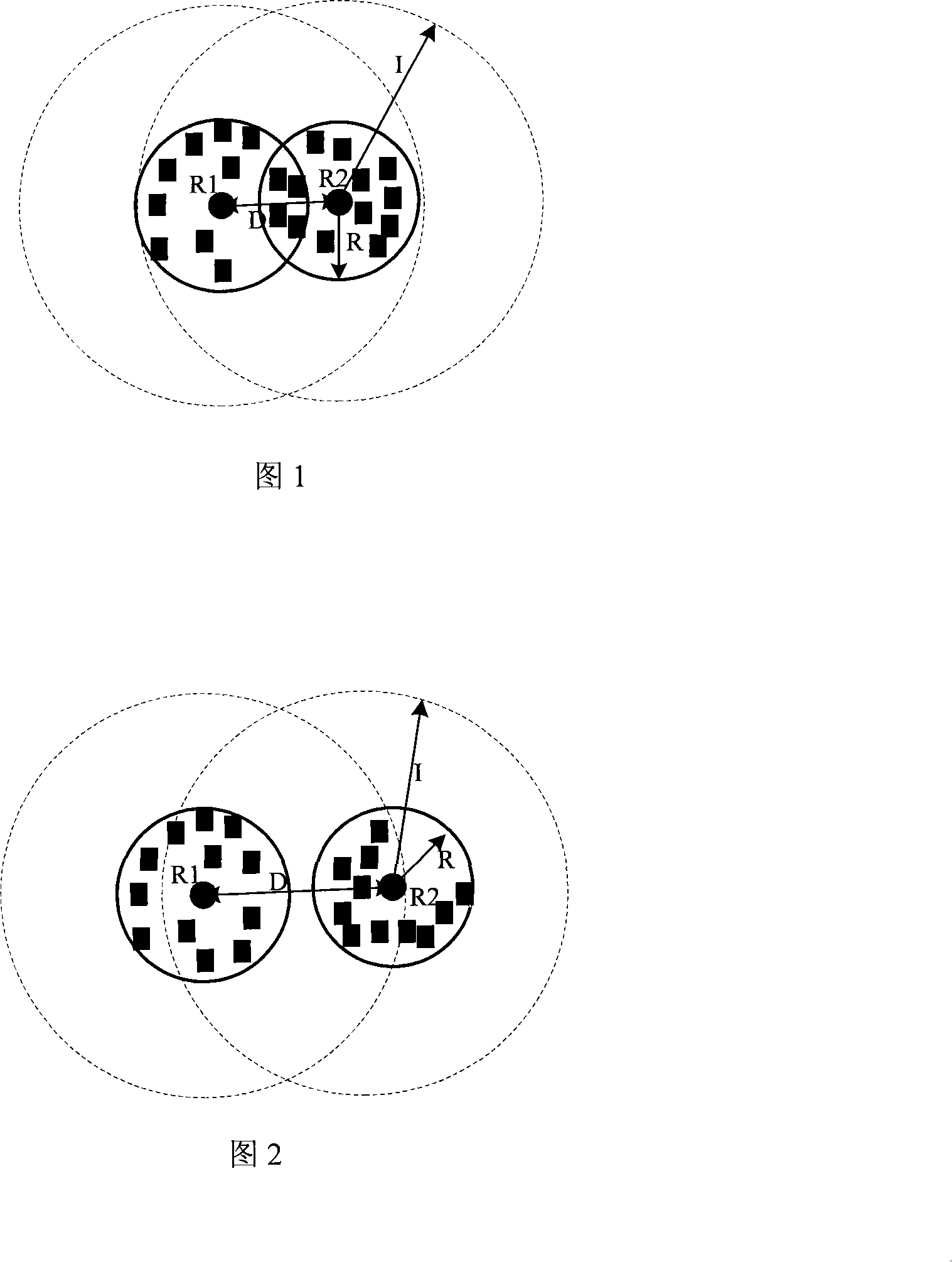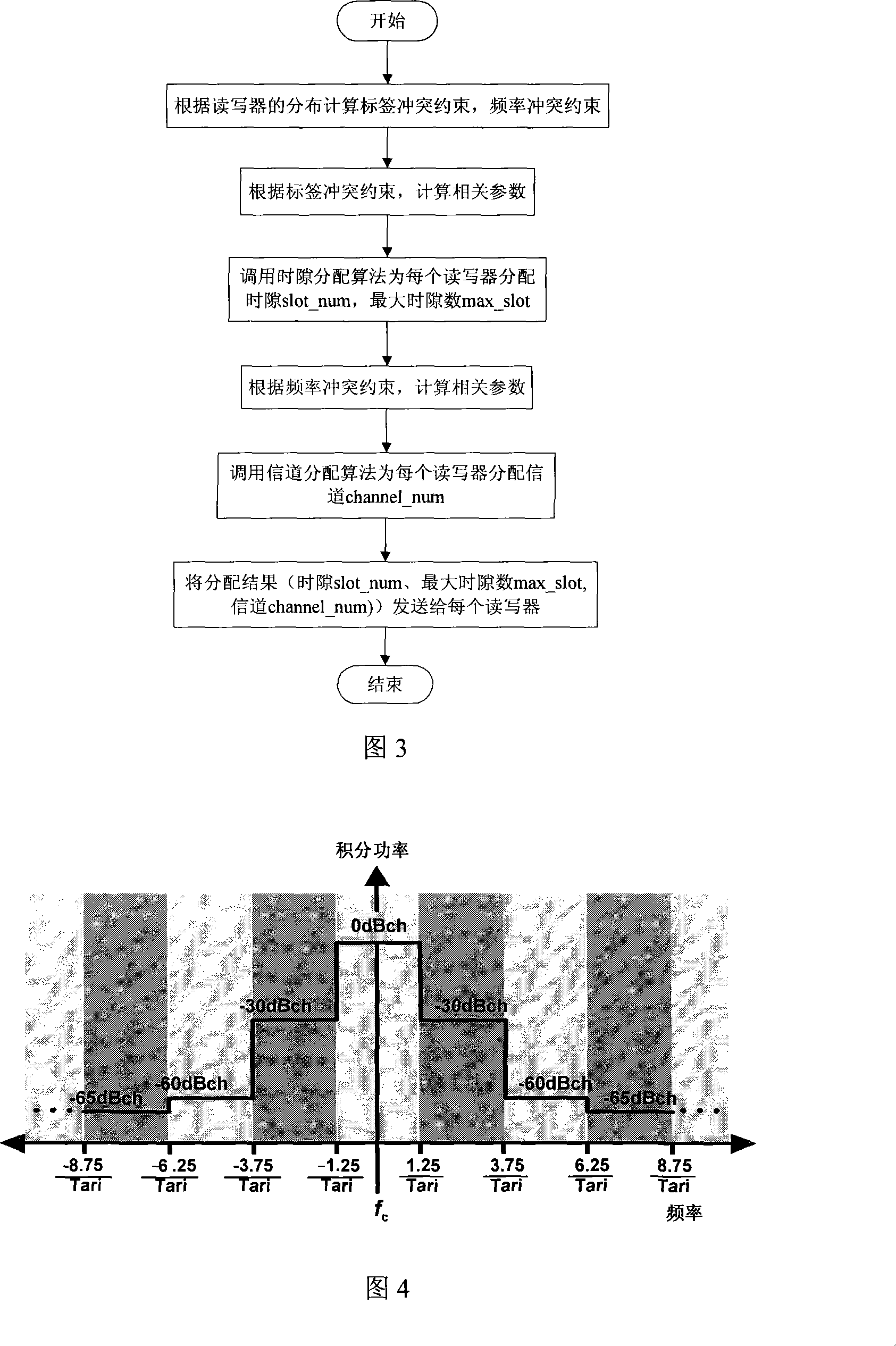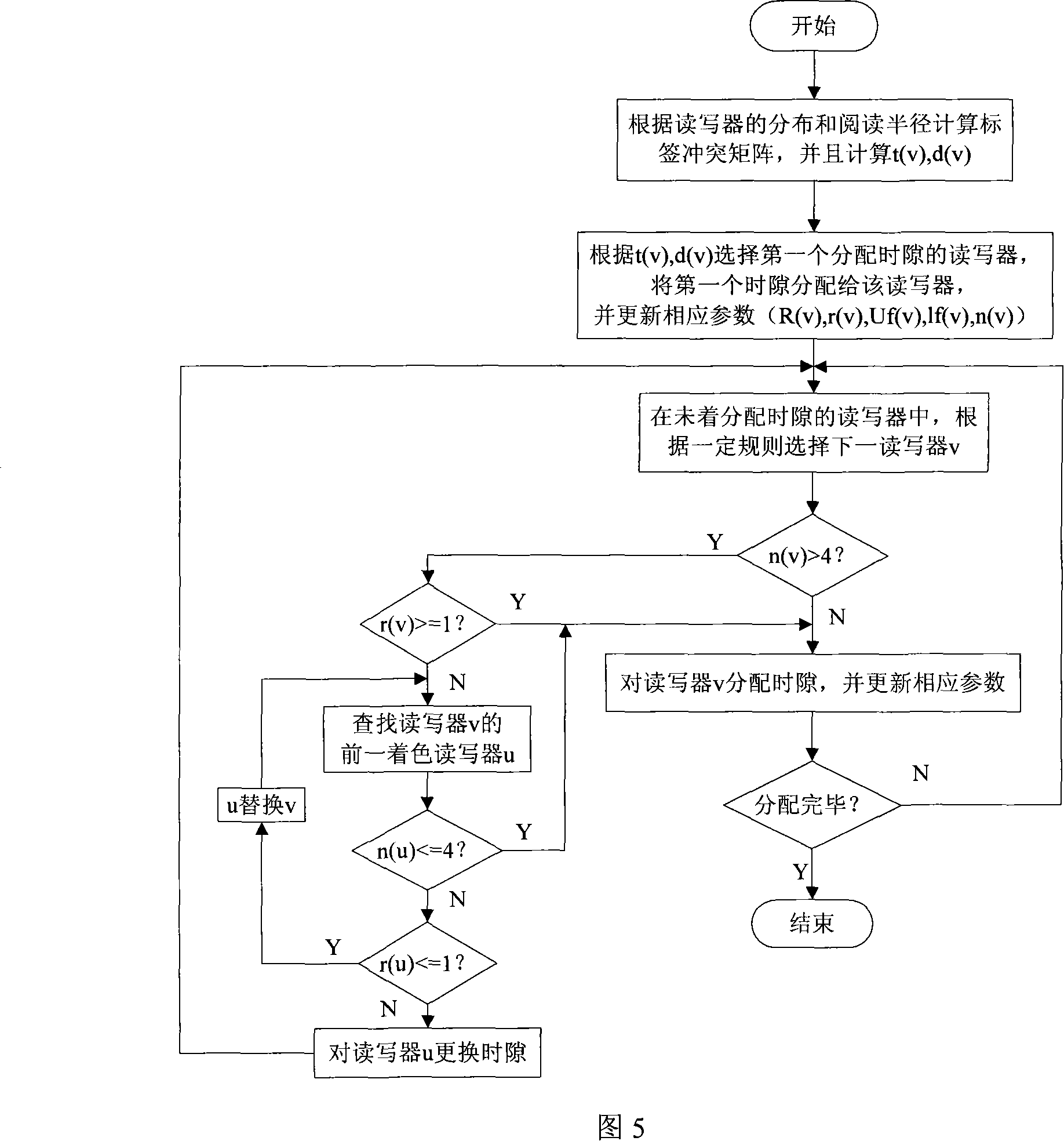An anti-collision method for RFID multi reader/writer based on graph decoration method
A multi-reader and reader technology, applied in the field of radio frequency identification, can solve the problems of long learning time, high algorithm complexity, low recognition efficiency, etc., to improve the average recognition speed, avoid frequency conflicts, and avoid label conflicts. Effect
- Summary
- Abstract
- Description
- Claims
- Application Information
AI Technical Summary
Problems solved by technology
Method used
Image
Examples
Embodiment Construction
[0046] Embodiments of the present invention will be described in detail below with reference to the accompanying drawings.
[0047] In the multi-reader working scenario, the working efficiency of the readers is very low, and the interference between the readers mainly includes frequency conflict and tag conflict. The writer assigns different time slots to resolve the tag conflict, and resolves the frequency conflict by assigning different frequencies (channels) to the readers with frequency conflicts.
[0048] The anti-collision technical solution for RFID multi-readers based on the graph dyeing method involved in the present invention mainly includes: a central controller, a plurality of RFID readers, and electronic tags to be identified. The central controller can be a computer in the working area of the reader. Its main function is to execute the time slot allocation algorithm and the frequency allocation algorithm, and the execution result of the algorithm, the maximum n...
PUM
 Login to View More
Login to View More Abstract
Description
Claims
Application Information
 Login to View More
Login to View More - R&D
- Intellectual Property
- Life Sciences
- Materials
- Tech Scout
- Unparalleled Data Quality
- Higher Quality Content
- 60% Fewer Hallucinations
Browse by: Latest US Patents, China's latest patents, Technical Efficacy Thesaurus, Application Domain, Technology Topic, Popular Technical Reports.
© 2025 PatSnap. All rights reserved.Legal|Privacy policy|Modern Slavery Act Transparency Statement|Sitemap|About US| Contact US: help@patsnap.com



